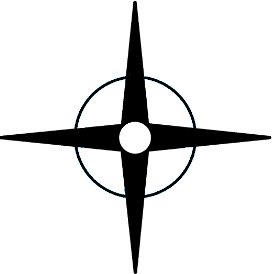About
Hello! My name is Aaron Ward. Leader Navigation is a place where I share thoughts, experiences and resources regarding personal leadership development.
I know a single thought can change a life, inspire us to think bigger or motivate us to take action. I hope the thoughts and ideas summarized and shared in this website will help facilitate the your next step toward becoming better.
Books and courses are in progress. I love teaching and sharing what I continue to learn about personal leadership development. When you subscribe, you'll begin receiving weekly newsletters about new content and other leadership topics.
Thank you!

Purpose
I hope this website contains an idea that inspires you to become a better person and a better leader. Here are some of my goals for this website:
- Help you strengthen your leadership foundation
- Help you take the next step on your leadership journey
- Provide useful resources that enable and strengthen you as you navigate the adventures of leadership
- Promote positive, inspiring and uplifting content
- Provide resources that enable you to improve yourself and build your team
- Research and summarize leadership literature and resources
- Encourage continuous learning
Vision
My vision is for Leader Navigation to become a premier online resource dedicated to empowering leaders on their journey to excellence. The articles and resources will provide comprehensive guidance and insights to help you navigate the complex landscape of modern leadership.
As I continue to learn about and understand the unique challenges leaders face in today's dynamic business environment, I hope the resources on this site will help you take the next step in overcoming your current obstacles. The content addresses a wide range of leadership topics, from developing emotional intelligence and fostering innovation to building high-performing teams and driving organizational success.
The articles and resources delve into the core principles of servant leadership, emphasizing the importance of empathy, self-awareness, and personal growth. Together, we can explore effective communication strategies, decision-making frameworks, and proven techniques for inspiring and motivating others.
Whether you're an experienced executive or an emerging leader, Leader Navigation offers valuable resources to help you cultivate a growth mindset, lead with authenticity, and create a lasting impact. Practical tips and real-world examples will equip you with the tools needed to overcome obstacles, drive change, and achieve your leadership goals.
With a commitment to continuous learning and development, Leader Navigation stays at the forefront of leadership trends and best practices. I reference insights from renowned thought leaders, groundbreaking research, and success stories from across industries.
Join our community of leaders and unlock your full potential with Leader Navigation. Subscribe now to receive the most recent content and take your leadership skills to new heights. Let us be your trusted guide on the path to leadership excellence.
Our key value propositions of Leader Navigation, include:
- Comprehensive guidance on modern leadership challenges
- Focus on servant leadership principles and personal growth
- Practical tips and real-world examples
- Commitment to continuous learning and staying on the cutting edge
- Positioning as a trusted resource to help leaders achieve their full potential
Logo Symbolism
Here are some thoughts about the various aspects of the logo I created for this website.
Compass

A compass is a timeless symbol of leadership, embodying several key principles that leaders strive to uphold. As using a compass enables us to move in the right direction, effective leaders provide a clear vision and direction for their team. Here are a few ideas about how a compass symbolizes leadership:
- Direction and Vision: A compass always points north, providing a consistent reference point. Similarly, leaders must set a clear direction and vision for their team, guiding them towards common goals and objectives.
- Consistency: A reliable compass is consistent and unwavering. Likewise, leaders should demonstrate consistency in their actions and decision-making, fostering trust and dependability among team members.
- Adaptability: While a compass points north, it allows for adjustments based on the changing landscape. Leaders, too, must be adaptable, capable of navigating through challenges and making course corrections as needed.
- Guidance in Uncertainty: In unfamiliar territories, a compass becomes an invaluable tool. Leaders provide guidance and support during uncertain times, helping their team navigate challenges and overcome obstacles.
- Empowering Others: A compass doesn't move on its own; it requires someone to use it. Similarly, leaders empower and guide their team members, fostering an environment where individuals can reach their full potential.
As we each navigate our leadership journey, I hope we remember the words of John C. Maxwell in his book, The 21 Irrefutable Laws of Leadership, "A leader is one who knows the way, goes the way, and shows the way." The compass is a symbol of our leadership journey, guiding ourselves and others toward success.
Circle

A circle is a compelling symbol of leadership, representing various aspects that mirror effective leadership qualities. Here are some ideas on how a circle can symbolize leadership:
- Inclusivity and Unity: A circle includes everyone within its boundaries. Similarly, leaders aim to create an inclusive environment, fostering unity among team members. It emphasizes the idea that every individual is an essential part of the collective success.
- Equality and Collaboration: All points on a circle are equidistant from the center, highlighting equality. Leaders should promote a collaborative culture where diverse perspectives are valued, and everyone contributes to the shared vision.
- Continuous Improvement: A circle has no beginning or end, symbolizing continuity. Effective leaders embrace a mindset of continuous improvement, encouraging their team to learn, grow, and adapt to new challenges.
- Open Communication: The circular shape allows for open communication from any point to any other point. Leaders can establish open lines of communication, fostering an environment where ideas can flow freely, and feedback is welcomed.
- Shared Leadership: In a circle, there is no hierarchical structure. Leadership is distributed among all points. This reflects the concept of shared leadership, where individuals take on leadership roles based on their strengths and expertise.
Embrace the symbolism of the circle in your leadership journey, recognizing the interconnectedness of your team members. As Simon Sinek emphasizes in his book, Leaders Eat Last, "Leadership is not about being in charge. It's about taking care of those in your charge." Let the circle guide you in leading with inclusivity, equality, and a commitment to continuous improvement.
GD&T Symbol
Geometric Dimensioning and Tolerancing (GD&T) True Position Symbol

Definition: True Position, or just Position as the ASME Y14.5 standard calls it, is defined as the total permissible variation that a feature can have from its “true” position. The “True Position” is the exact coordinate, or location defined by basic dimensions or other means that represents the nominal value. In other words, the Geometric Dimensioning and Tolerancing “Position” tolerance is how far your feature’s location can vary from its “True Position”.
Geometric Dimensioning and Tolerancing (GD&T) True Position Symbol can be seen as a leadership symbol in the context of precision, accuracy, and effective communication within a team. Below are a few thoughts about how the True Position Symbol reflects leadership qualities:
- Precision and Accuracy: The True Position Symbol in GD&T ensures precise location and alignment of features. Similarly, leaders emphasize the importance of precision and accuracy in tasks and goals, striving for excellence in every aspect of their leadership.
- Clear Communication: GD&T, including the True Position Symbol, provides a standardized language for communicating engineering specifications. Leaders, too, should excel in clear communication, ensuring that expectations, goals, and strategies are conveyed effectively to the team.
- Attention to Detail: The True Position Symbol requires a meticulous focus on details to ensure components align perfectly. Leaders exhibit a similar attention to detail in their decision-making, planning, and execution, fostering a culture of excellence within the team.
- Problem-Solving Skills: When deviations occur from the specified true position, problem-solving skills are crucial. Leaders, too, need strong problem-solving abilities to navigate challenges, make informed decisions, and guide their team towards solutions.
- Quality Leadership: The True Position Symbol is synonymous with quality control. Leaders must prioritize and uphold quality standards in their leadership practices, promoting a commitment to delivering high-quality results.
In your leadership journey, consider adopting the principles of precision, clear communication, attention to detail, and a focus on quality. As Stephen R. Covey emphasizes in his renowned book, The 7 Habits of Highly Effective People, effective leaders "Begin with the end in mind" and work towards achieving goals with precision and excellence. Let the True Position Symbol inspire you to lead with accuracy, clarity, and a commitment to quality.
Affiliate Links
Some of the links on this page are affiliate links. This means that if you click on one of these links and make a purchase, I may receive a commission at no additional cost to you. As an Amazon Associate I earn from qualifying purchases. I only recommend products or services I believe will be useful to my readers. Your support in purchasing through these links enables me to keep creating helpful content. Thank you for your support!
